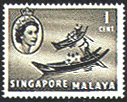Stamp collecting is the collecting of postage stamps and related objects, such as covers (envelopes or packages with stamps on them). It is one of the world's most popular hobbies, with estimates of the number of collectors ranging up to 20 million in the United States alone.
Collecting is not the same as philately, which is the study of stamps. A philatelist often does, but need not, collect the objects of study, nor is it necessary to closely study what one collects. Many casual collectors enjoy accumulating stamps without worrying about the tiny details, but the creation of a large or comprehensive collection generally requires some philatelic knowledge.
Stamp collectors are an important source of revenue for some small countries who create limited runs of elaborate stamps designed mainly to be bought by stamp collectors. The stamps produced by these countries far exceed the postal needs of the countries.
Some collectors, observing the generally rising prices of rare stamps, have taken to philatelic investment. Rare stamps are among the most portable of tangible investments, and are easy to store.
No equipment is needed in order to be able to collect stamps. However, the great majority of collectors choose to invest in a few essential items for the better display, preservation and inspection of their stamps. Below are some of the more commonly used pieces of stamp collecting equipment.The easiest and cheapest method to store stamps is placing them in glassine envelopes and storing them in a box free from humidity, light, and heat. This obviously will be of no help when trying to go through the stamps for display or other purpose. Placing stamps in stamp albums helps in easy display of the stamp collection. Stamps can be displayed as per the wish of the collector, by country, topic, or even size, such that the ultimate display is pleasing to the eyes.











